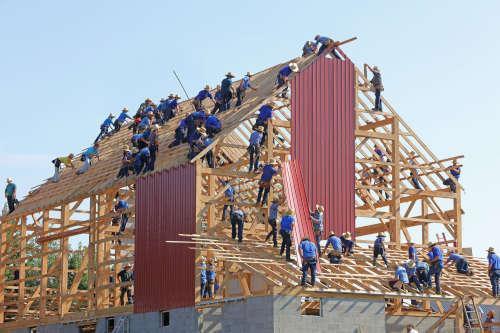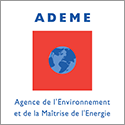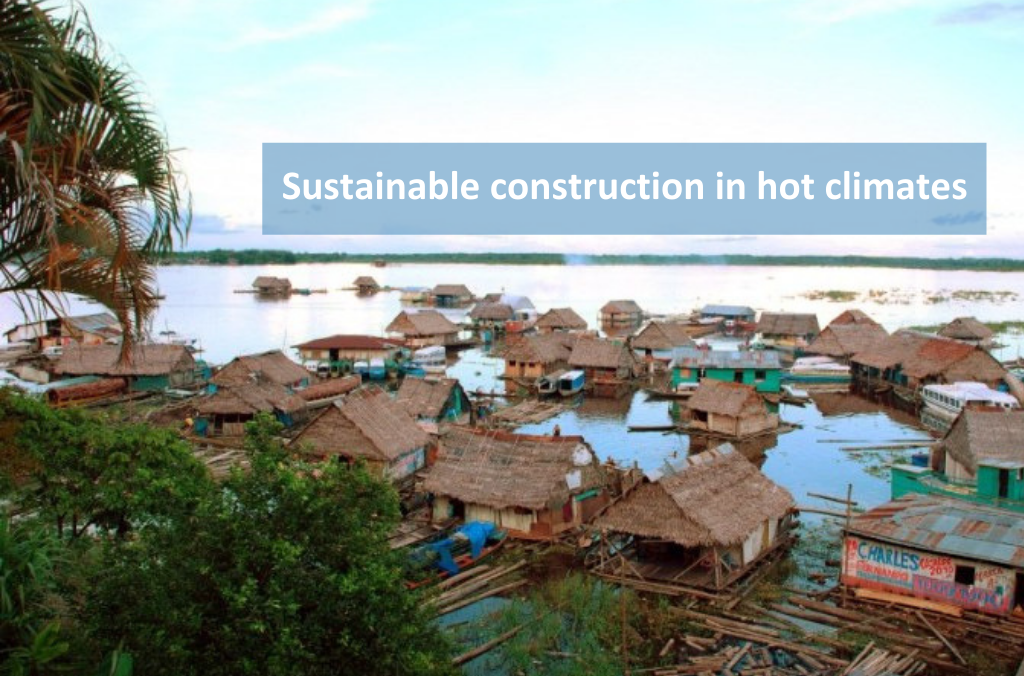# 19 Anticipating climate change effects by building our cities
Cécile Gracy

Having a Mediterranean climate like that of Badajoz, a city in south-eastern Spain, in Paris in 2080 may seem a cheerful prospect... and finally not as dramatic as the alerts suggest? However, Badajoz's summer climate is dangerously close to the temperatures recorded during the 2003 heat wave. This episode had caused more than 15,000 deaths in France and testified the inability of our cities to cope with such heat waves.
The climate is changing, our cities are getting warmer
By showing that a given place in the world could experience a similar climate in the future to another place in very different latitudes, the climate analogues method allows us to imagine the impact of rising average temperatures on our living conditions. For example, a study has shown that the city of Washington in the United States could experience a tropical-type climate by 2080. This increase in average temperatures, but also the rise in maximum temperatures and the increase in the frequency and intensity of heat waves are all observed and expected effects of climate change. In parallel with the increase in temperatures, the concentration of populations in urban areas and the ageing of the population will lead to an increase in the number of people vulnerable to heat.
Urban areas are particularly sensitive to increased temperatures (especially at night) due to the urban heat island effect. A heat island is characterized by a higher surface or air temperature in urban areas than on the outskirts of the city. This overheating takes place in a mineral and confined urban environment that impacts the thermal feeling of city dwellers. Heat can create heat stress for sensitive populations such as the elderly, infants, young children, sick people...
As the buildings in our cities are built to last for decades, the building and construction sector will have to face the hazards of climate change, the most worrying ones being the swelling/shrinkage of clays due to droughts and heat waves, not to mention the increase in the frequency of extreme weather events.
The primary function of the building is to provide shelter, i.e. to protect from external conditions. It creates a microclimate in which humans are no longer dependent on climatic events. For a long time built in perfect adequacy with its environment, it is common today that the building is conceived in opposition to it, creating spaces disconnected from the environment in which they are located. The result is a building stock that depends on energy to meet comfort requirements.
Furthermore, large-scale standardised construction techniques are demanding in terms of raw materials, energy and water. The building and construction sector is responsible for 40% of global greenhouse gas emissions and around 35% of final energy consumption.
Solutions for building better and living in hot climates
The prospect of climate change should lead us to rethink the way we design buildings and to develop expertise on several key issues of sustainable construction. Innovative construction processes are now making it possible to design low carbon, energy-efficient, resilient, healthy and inclusive built environments, helping to mitigate climate change and adapt our cities and buildings to its effects.
This imperative for immediate action is reinforced by an exponential growth in construction needs, unprecedented in human history. This growth is driven by demographic factors, with a population that will exceed 9 billion people by 2050, but also by a massive urbanization process, particularly in the hot tropics of Africa and Asia.
Bioclimatic and passive approaches make it possible to reduce the energy consumption of buildings and provide a response to the heat island effect. They make it possible to take advantage of the benefits linked to local conditions and to protect against climatic constraints. Taking into account the characteristics and specificities of the location (in particular the position of the building in relation to the prevailing winds) and planting vegetation around the buildings are two essential conditions to allow the installation of natural ventilation and avoid air conditioning, while integrating solutions to limit the impact of sunlight (insulation, solar protection, etc.).
In the French Overseas Territories, the French Environment and Climate Control Agency (ADEME) is developing many projects to drastically limit energy consumption in buildings. The Moufia amphitheatre on Reunion Island is the first building without air conditioning and with positive energy. It was designed by the architect Olivier Brabant with a view to protecting the building from the sun while evacuating the internal airflow and encouraging air movement.
Research projects are also being carried out to develop energy-efficient and environmentally friendly air conditioning and cooling systems, which cannot always be avoided without generating thermal discomfort, in certain very hot and humid climates for example. Within the framework of the ADEME call for research projects "Air conditioning of the future", 7 projects have been carried out: some on new and more environmentally friendly fluids, and others on passive devices that do not require refrigerants.
In addition, ADEME supports the development of cooling networks when the projects are accompanied by a global approach to urban design in "passive urban cooling" for the connection of new districts and a policy to control energy consumption. These networks make it possible to achieve energy performance levels that are 5 to 10 times higher than those of decentralised electrical production of the aerothermal type commonly used in the air conditioning of buildings, and to limit the development of high-emission room air conditioners.
During the workshops of the Hot Climate Track of the Cities to be Congress, international experts will discuss these issues in detail. Through project reviews and feedback from around the world, come and discover solutions to meet the challenges of countries in hot and tropical climates.
Article written by Cécile Gracy and Candice Ribot of Ademe International
Photo credit : Randy Fath on Unsplash
ADEME website: https://www.ademe.fr/
Twitter ADEME: https://twitter.com/ademe?lang=en
BIBLIOGRAPHY :
ADEME. (2015). Etude prospective sur les impacts du changement climatique pour le bâtiment à l'horizon 2030 à 2050. Disponible sur https://www.ademe.fr/etude-prospective-impacts-changement-climatique-batiment-a-lhorizon-2030-a-2050
ADEME. (2016). Prospective logements 2050. Comment vivrons-nous dans notre logement en 2050? https://www.ademe.fr/logements-2050-evolutions-habitat
ADEME. (2017). Diagnostic de la surchauffe urbaine. Méthodes et applications territoriales. Disponible sur https://www.ademe.fr/surchauffe-urbaine-recueil-methodes-diagnostic-dexperiences-territoriales
ADEME. (2017). Les avis de l’ADEME. Les réseaux de chaleur alimentés par des énergies renouvelables et de récupération (EnR&R). Disponible sur https://www.ademe.fr/sites/default/files/assets/documents/avis_ademe_reseauxchaleur_201712.pdf
ADEME. (2018). La lettre recherche. ADEME&Vous. « Climatisation du futur » : Refroidir sans réchauffer la planète. DIsponible sur https://presse.ademe.fr/2018/03/lettre-recherche-ademevous-climatisation-du-futur-refroidir-sans-rechauffer-la-planete.html
Fitzpatrick, M. C., & Dunn, R. R. (2019). Contemporary climatic analogs for 540 North American urban areas in the late 21st century. Nature Communications. Disponible sur https://www.nature.com/articles/s41467-019-08540-3
Garde, F., & Payet, M. (2015). Ventilation naturelle sous les tropiques. Amphithéâtre du Moufia à Saint-Denis de La Réunion. Ecologik .
Global Alliance for Buildings and Construction. (2018). 2018 Global Status Report. Disponible sur https://www.globalabc.org/
NOTES :
1 (Fitzpatrick & Dunn, 2019)
2 (ADEME, 2015)
3 (Global Alliance for Buildings and Construction, 2018)
4 (Garde & Payet, 2015)
5 (ADEME, 2018)
Read our previous article : #18 - An operation for renewed housing in French overseas departments





